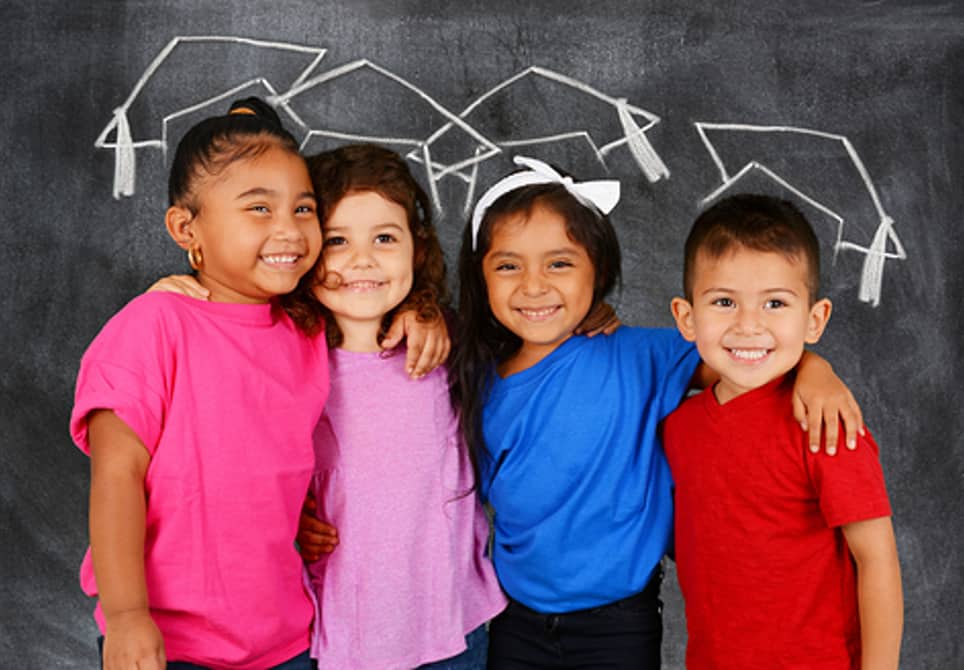How Your Next Freshman Class Will Expect Personalized Learning

By Robert McGuire
This blog was first published on Acrobatiq.
Many higher education leaders try to stay current on innovations in K-12 education to see what their universities and colleges can learn from and to anticipate what kind of student population they’ll be seeing on campus in the future.
Oftentimes, an educational trend plays out in different ways in K-12 than it does in higher education, and the contrast can be instructive. Personalized adaptive learning is one such area, and at Acrobatiq we are often asked about how primary and secondary schools are implementing it and learning from their experiences. To that end, we asked for the perspective of one of the most influential thought leaders in K-12 education technology: Tom Vander Ark.
Tom is CEO of the innovation design firm Getting Smart, which specializes in strategy and “learner experience” design for educational institutions, and a partner in the venture firm Learn Capital. He’s also a prolific writer and speaker. His firm’s weekly newsletter is essential reading for many in education and technology, as his regular column on Education Week. He is the author of Getting Smart: How Digital Learning is Changing the World, a former Executive Director of the Bill & Melinda Gates Foundation, and former superintendent of Federal Way Public Schools in Washington state.
Tom graciously gave his time and insight for this interview, condensed and edited for clarity, in which he discusses the transition to highly engaging teaching practices, the growth of “dispositional” measures, competency-based education, credentialing and the need to relentlessly focus on the learner experience.
What progress are you seeing in K-12 on implementing technology for personalized learning?
The first benefit we saw, starting ten years ago, was adaptive and game-based learning in K-8, and that’s now quite widespread. The vast majority of U.S. K-12 schools make a reasonably good use of adaptive and game-based learning. Most students now get some personalized math learning — meaning experiences calibrated close to their level of mastery. Not too easy, not too hard. They’re in an adaptive assessment environment, meaning teachers and students are getting accurate skill-based feedback on a continuous basis.
The downside is that in most schools kids go from that back to a work-based classroom environment. Not very frequently do we see that feedback being put to good use so that there’s a coherent and integrated learning experience. But there’s certainly some benefit to having at least a portion of a student’s day highly personalized.
Is there a track record for adaptive courseware in K-12?
No. I would say that the widespread tools in K-12 mathematics are like DreamBox and i-Ready® from Curriculum Associates. At the secondary level, we see ALEKS. But these are all supplemental adaptive tools. Carnegie Learning made an initial push for supplemental tools and then began advertising themselves as a core alternative about three years ago, but we hear less about them. So the use of adaptive courseware as a core curriculum is seldom seen in K-12.
There’s a perception that K-12 is somewhat less chaotic than higher ed when it comes to procurement and implementation of technology. Do you see it that way?
Well, it’s pretty chaotic. The one thing that makes it feel slightly less chaotic is that it’s becoming very common that there’s a single-device solution implemented either school-by-school or district-by-district. Higher ed is much more of a bring-your-own-device environment. In K-12 you can’t rely on BYOD as the access solution.
What do you think innovative faculty and higher ed administration can learn from what has already occurred in K-12 about personalized learning?
Like in higher ed, thousands of K-12 classrooms have become blended over the last five years. What I’m most excited about is that we’re seeing thousands of schools adopting blended models as a school or as a school system and moving beyond that individual innovative classroom to a blended system. We have been codifying the different types of blended models with a set of tools and devices. That conversation has been quite productive, but it’s not nearly as far along in higher education.
The shift to digital, this paper replacement or textbook replacement, is well underway. Perhaps in K-12, it’s two-thirds of the way through. In many cases, that’s more of a tech integration strategy than a real blended learning strategy. In other words, technology is being added to the old model rather than being used to re-engineer the learning experience, the learning environment. But we are making really good progress on the shift to digital and are maybe half-way home on the transition to blended learning.
It’s quite possible to make useful learning experiences with every teacher adopting their own blended strategy. But blended and competency-based learning are a team sport. Blended learning should be, and competency learning must be, approached as a group of teachers making decisions about a learning experience, a learning trajectory, and how kids moves along a learning trajectory.
Why is the shift to competency-based education moving so slowly?
It’s such a profound change. It’s everything about how kids learn, how they progress, whether they progress as individuals or groups, and how you staff and fund schools. So there are few innovative competency-based models in K-12 and even fewer in higher education.
The most productive work is happening in New England, funded by the Nellie Mae Foundation and spearheaded by the Great Schools Partnership and the New England Secondary Schools Consortium. They’re working with hundreds of high schools in New England to create proficiency pathways, and they’re working with legislatures in New Hampshire and Maine and to develop a consortium of public institutions that accept the proficiency-based diploma.
That’s a regional collaborative to move high schools, state policy, and higher education simultaneously. I would love to see other regions adopt that approach, because it’s very hard for a high school to move to a competency-based model when most higher education institutions are still looking for a transcript with courses and credits.
What will these changes in K-12 mean for higher ed instructors if incoming students have had different learning experiences?
The transition will be a bit more seamless. There will be more students with higher ed credit already and moving into a course or a portion of a course where they’ve demonstrated mastery. We should see a dramatic reduction in the percentage of students in developmental education. That’s the big hopeless developmental ed and more students in higher level courses.
In terms of the learner experience, we’re seeing an interesting resurgence of project-based learning. But it’s a highly connected, super engaged project-based learning combined with personalized learning. Kids are getting individualized skill building that prepares them to engage in project-based learning.
In higher education, young people are going to expect a much higher percentage of their learning to be at their learning level, in their best learning modality, and in a high engagement pedagogy and high engagement environment.
What kind of outcomes evidence about personalized learning is accumulating in K-12?
Leading districts and leading school networks are showing significant progress. The most innovative school districts and school networks are very high-performing and improving.
Houston Independent School District is arguably one of the two or three best urban districts in the country with improving test scores and graduation rates. They’ve also been aggressive about incorporating technology and blended learning strategies. The same is true of the leading charter networks, Summit Public Schools being the best example of blended secondary schools and also producing extremely high test scores and graduation rates.
The interesting thing about Summit and Houston is that they’re no longer just concerned about traditional academic results. They both have turned their attention to a broader set of aims that include social-emotional learning and career readiness — collaboration, creativity, critical thinking. We’re seeing schools adopting a broader set of aims that better reflect what real college and career readiness requires.
We’re very early into understanding how to describe those skills and dispositions and how to measure them, however. We just don’t know how to talk about or measure this stuff.
Ideally, educational leaders start with strategy conversations rather than with the tools. When you look at best-in-class in K-12, what strategic perspective on technology do people take that are effective?
You described an informed point of view that doesn’t always reflect procurement. There have been a lot of cases where people have leapt out ahead of themselves and bought a device before they asked the question, “What should graduates know and be able to do?” A superintendent gets the sense that they ought to increase access to technology. They run a tech levy or float a bond in an effort to improve access. But they really haven’t had this conversation. The leading schools and districts are having this conversation.
Higher ed has resisted a move toward common expectations for several decades. The implications are really clear that it’s time. The world is moving toward competency and credentialing. Higher ed inevitably has to come along with that and accept, if not lead, credentialing real verified knowledge and skills.
Those aren’t just limited to reading, writing, and math but also include harder to measure dispositions that are probably more important from an employment standpoint than traditional academic skills. That’s a huge implication for higher ed.
What kind of credentialing do you mean?
Demonstrated skills and dispositions. One example is career technical education. Fields like advanced manufacturing have a sequence of credentials people can earn. These, historically, have been earned on the job, sometimes in a community college setting. But as more jobs get more technical, we’ll see more of this micro-credentialing.
It’s one area where education might actually lead. There’s a strong trend in K-12 right now toward micro-credentialing where teachers can learn in bite-sized chunks and earn a sequence of micro-credentials that signal to others their level of expertise. I think we’ll see more of that in other professions in the very near future.
What developments in K-12 should university leaders be alert to?
Number one, focus on the learner experience. This is the meta-lesson from software development over the last twenty years. Software development has been obsessed with the UX, or the user experience. In the same way, those of us who care about learning want to be obsessed about learner experience. Whatever kind of learning environment you’re in, from preschool to college, you ought to be paying attention to your customers and what their experience is like.
That just requires some simple things like asking them questions about what they’re experiencing. They will expect a much higher level of engagement than has been the case. They will increasingly expect more sophisticated ways of market signaling rather than just a grade. They’ll want to develop a portfolio and build professional networks.
These new forms of market signaling are going to be at least as important as the transcript you provide. We’re coming to a time where what you can do and what you have done is as important as where you went to school. It’s not just about class time anymore.
For more, see:
- 15 HigherEd Student Personas That Will Help You Redesign Learner Experience
- Next Generation K-12: 10 Implications for HigherEd
Stay in-the-know with all things EdTech and innovations in learning by signing up to receive the weekly Smart Update. This post includes mentions of a Getting Smart partner. For a full list of partners, affiliate organizations and all other disclosures, please see our Partner page.





0 Comments
Leave a Comment
Your email address will not be published. All fields are required.